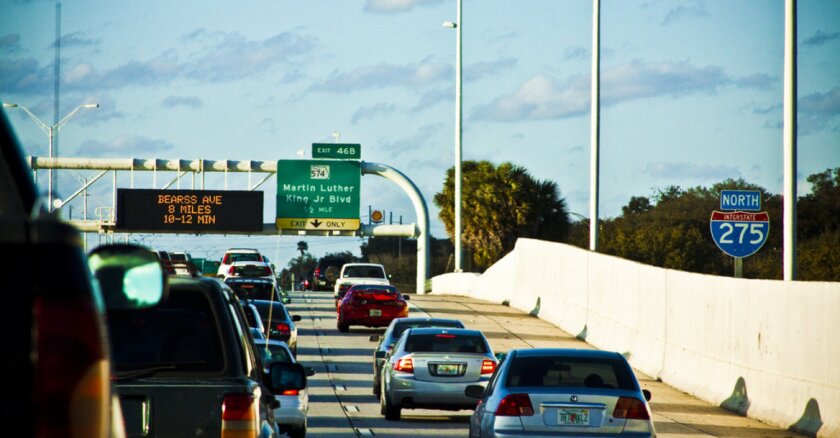In Tampa, Fla., transportation eats up about 25 percent of the median wage earner’s income, said Vik Bhide, director of mobility in the city.
“The bottom line is, for the median wage or below, getting around is very expensive,” said Bhide during a transportation equity panel at the CoMotion MIAMI conference April 21. “And certainly, that’s not an equitable way to move forward.”
The reason transportation is so expensive in Tampa is not unlike the reason it is costly in many cities — owning and operating a car is the only reasonable choice for residents.
“One of the reasons the cost of transportation is so high in Tampa is because transit investment is at a historical low,” said Bhide. “And that means we are increasingly car-centric and car-dependent.”
Not far away, in Miami, the grassroots group Transit Alliance Miami was formed in 2017 and has spearheaded a campaign to redesign the bus network in the region. The redesigned system, known as the Better Bus Project, is set to be implemented this summer.
“We have found that if you don’t give choices to people, the easiest choice will be to continue to drive,” said Grace Perdomo, executive director of Transit Alliance Miami, during the panel.
What Perdomo and others have long championed is a public transit system that is frequent, safe, convenient, affordable and functions, not as a mode of last resort, but one residents and visitors will choose to use.
“You want both choice riders and transit dependent,” said Kome Ajise, executive director of the Southern California Association of Governments (SCAG), in some of his comments. SCAG’s focus area is home to more than 19 million people spread across 191 cities and six counties. “We like to say, you can own a car, but you should have the choice to not have to drive it everyday.”
Elevating transit systems to this level takes political will, public support and the funding to actually do it. In Tampa, the Hillsborough County Board of Commissioners recently approved placing a 1 cent sales tax increase onto the November ballot. One part of the tax would be an allocation of 45 percent — “right off the top — for transit, said Bhide. “I think that’s going to move the needle in a big way.”
The funding can help with not only improving the operations of public transit, but starting to put in place other amenities serving bikers and pedestrians, and other approaches to make transportation less costly for the region.
One approach to reducing transportation costs in a direct and visceral way is to get ride of the farebox.
“I feel like bus transit, being free, is a real possibility — especially for smaller to mid-size cities, where the farebox collection isn’t as much as compared to the rest of the operating costs,” said Bhide.
“It’s worth pursuing that. It’s not that costly. It’s definitely less costly than building highways,” he added.
Other cities like Los Angeles and Kansas City, Mo., have explored the free rides concept, namely during the COVID-19 pandemic when many agencies stopped taking money, out of concerns for safety, as well as to ease the financial burden for the essential workers needing the service.
In Tampa, a two-mile streetcar has been free for about three years, and is regarded as wildly successful. In fact, the streetcar had higher ridership in 2021 than the entire 61-mile SunRail system.
“So our hope is to be able to grow that system,” said Bhide of the streetcar.









